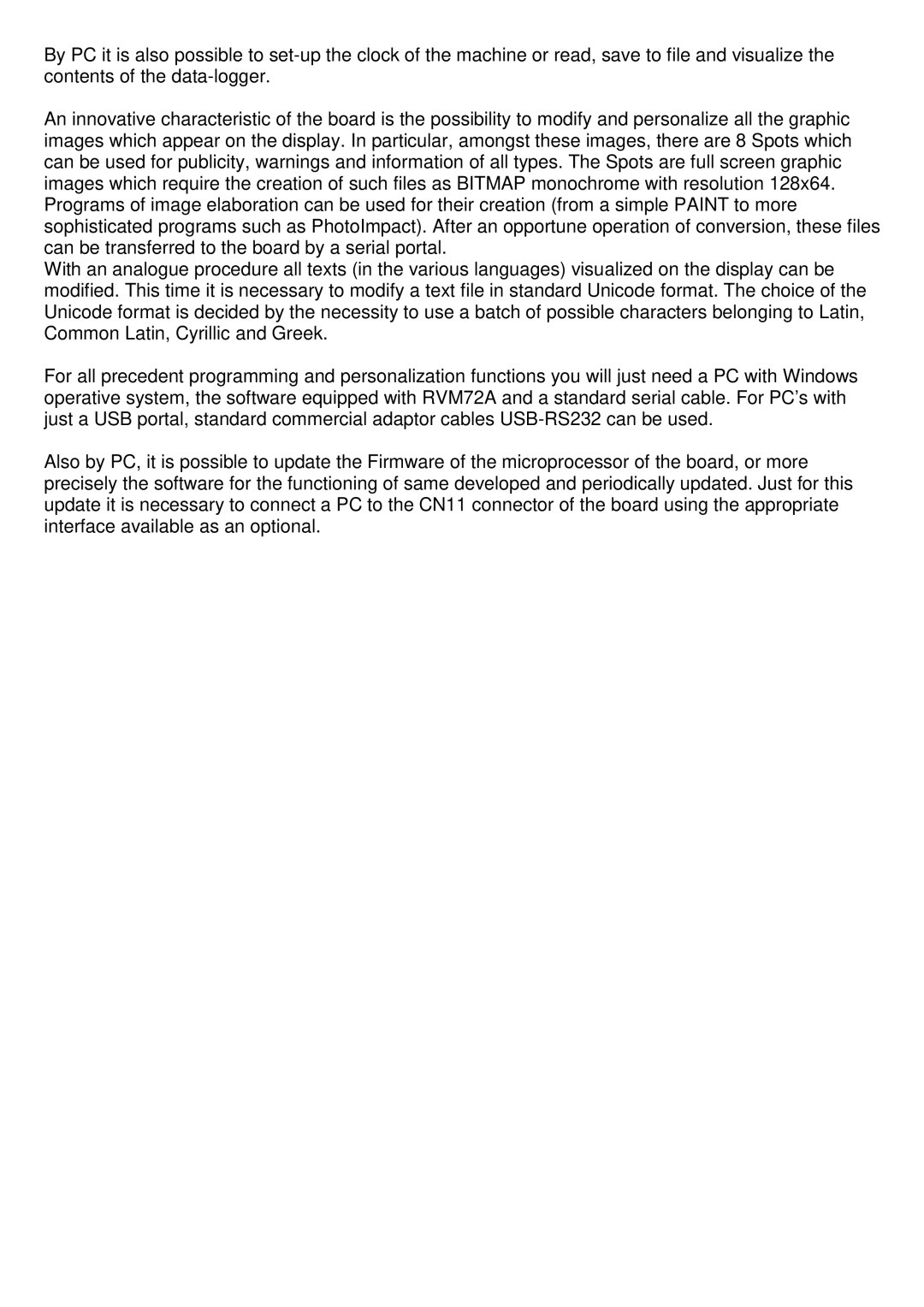By PC it is also possible to
An innovative characteristic of the board is the possibility to modify and personalize all the graphic images which appear on the display. In particular, amongst these images, there are 8 Spots which can be used for publicity, warnings and information of all types. The Spots are full screen graphic images which require the creation of such files as BITMAP monochrome with resolution 128x64. Programs of image elaboration can be used for their creation (from a simple PAINT to more sophisticated programs such as PhotoImpact). After an opportune operation of conversion, these files can be transferred to the board by a serial portal.
With an analogue procedure all texts (in the various languages) visualized on the display can be modified. This time it is necessary to modify a text file in standard Unicode format. The choice of the Unicode format is decided by the necessity to use a batch of possible characters belonging to Latin, Common Latin, Cyrillic and Greek.
For all precedent programming and personalization functions you will just need a PC with Windows operative system, the software equipped with RVM72A and a standard serial cable. For PC’s with just a USB portal, standard commercial adaptor cables
Also by PC, it is possible to update the Firmware of the microprocessor of the board, or more precisely the software for the functioning of same developed and periodically updated. Just for this update it is necessary to connect a PC to the CN11 connector of the board using the appropriate interface available as an optional.
